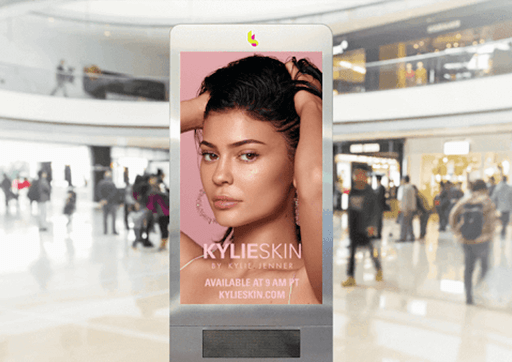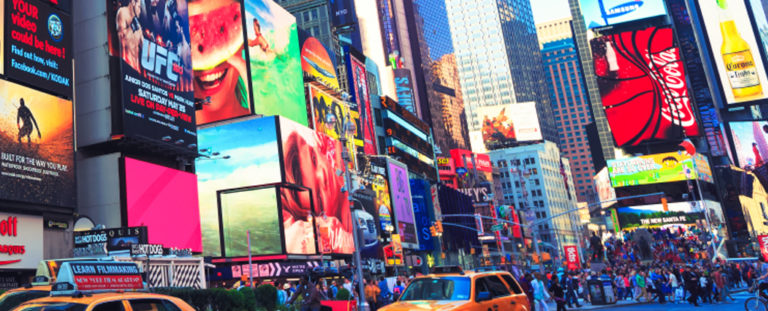DTC brands find measurable success with DOOH
Published: May 12, 2021
Throughout 2020, the world changed in ways we never expected. The spread of COVID-19 affected almost every part of our lives. Everything from how we interact with others, how we work to how we watch movies and obtain our groceries became much different than it ever was before. While safety concerns skyrocketed and several states spent many months in full lockdown, the world turned to online resources to maintain daily life.
Due to direct to consumer (DTC) brands’ nature to primarily do business online, many DTC companies saw an increase in sales during the pandemic - one of the few industries to grow during this vulnerable time. In fact, 75% of U.S. consumers have changed their shopping habits due to the pandemic and U.S. consumer online spend was $861 billion in 2020, up 44% compared to $598 billion in 2019. The global crisis caused by COVID-19 had many brick-and-mortar retailers reevaluating their digital approach out of necessity-- with several brands shifting to a direct selling model as a result. Staying relevant in an increasingly competitive digital environment is crucial to the success of direct-to-consumer brands.
Digital out of home (DOOH) advertising is a quickly growing industry that has gained recent spotlight due to more consumers spending more time outside and off devices. For direct-to-consumer brands, DOOH is a cost-effective option to increase brand trust and awareness, drive online traffic, and generate detailed reports. Additionally, the creative and programmatic elements of DOOH allows for memorable campaigns which are sure to create buzz in a crowded digital landscape, as we saw in the Kylie Skin campaign.

Many direct-to-consumer brands are startups - which means every cost counts. The average eCPM across 40 venue types and 460K+ DOOH screens on Adomni stands at $9.55, proving out of home to be an affordable investment with a multitude of benefits. The flexibility of programmatic also enables DTC marketers to pause campaigns in response to unexpected changes or change out ad creative instantaneously to promote a new product or promotion.
The pandemic brought on a lot of vulnerabilities - increasing the overall need and desire for trust within brands. Trust has become so important to consumers that 53% of respondents of the 2020 Edelman Trust Barometer Special Report said, “‘whether you trust the company that owns the brand or brand that makes the product’ is the second most important factor when purchasing a new brand - first being price.” Likely due to the overexposure to digital screens, millennials are more trusting of other media, such as out of home, than online ads. 56% of millennials trust OOH above online display and online video. Direct to consumer brands can use DOOH advertising in conjunction with other advertising channels, such as social media or online messaging, to increase the effectiveness of a campaign even further - for example, if a DTC brand with a DOOH campaign sets up geofencing around digital billboards, they could then target the users who entered the perimeter and personalize mobile ads based on their interaction with that specific screen location, which can bolster brand trust and perception.
Building positive perception around ads is critical since according to The Harris Poll, around 75% of American consumers have felt device burnout from too much screen time during the pandemic and have been tuning out online ads as a result. For DTC brands, who live and breathe in the digital sphere, the increasing ad fatigue could severely impact digital marketing efforts to drive web traffic. An alternative to contributing to the online ad clutter is to meet consumers where they are headed - which is outside. Faring well DOOH is the uptick in consumer appreciation for their outdoor environment. 45% of consumers reported noticing digital out of home ads more than before the pandemic and that growth has some major power. When DOOH ads are included in a campaign, it increases online activations through search and social media 4x the expected rate given relative ad spend in those media. It also makes consumers 46% more likely to engage with a brand on a smartphone. Leveraging the power of DOOH, DTC brands are connecting with consumers in a seamless way, delivering messaging which encourages users to engage online and influences future purchase decisions.
As the pandemic is seemingly coming to a close thanks to the widespread administration of the COVID-19 vaccine, direct-to-consumer brands would be wise to take advantage of the change in consumer behavior. If you’re ready to build a DTC marketing strategy that drives results with digital out of home advertising, our team is ready to help plan your DOOH campaign today, at no charge to you! Contact us at concierge@adomni.com.
Written By: Erica Wisor
To get the latest updates on out of home advertising, digital marketing and technology, follow us on:
Or sign up for our newsletter.






